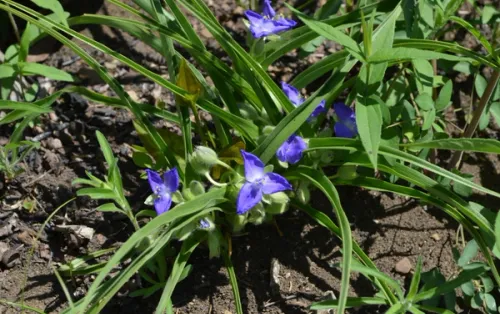Prairie Spiderwort
Prairie Spiderwort, also known as Longbract Spiderwort, is a perennial widely native to North America Great Plains. This plant typically reaches heights of 12 to 18 inches and forms clumps of narrow, blade-like leaves that are both graceful and dense. In the early to mid-summer, prairie spiderwort produces clusters of striking blue to purple, three-petaled flowers that bloom in succession over several weeks. Each flower opens for only one day but is replaced by others in quick succession, creating a prolonged display of color. The flowers attract bees, butterflies, and other pollinators, making it an excellent choice for ecological gardens, native plantings, and borders. It thrives in full sun and well-drained soils but is quite drought-tolerant once established.
Details
Range Map
Ecological Benefits
Maintenance Tips
- Drought-resistant; water regularly during the first growing season to establish roots, then only as needed.
- Deadhead spent blooms to encourage further flowering and prevent self-seeding, if desired.
- Prefers well-drained, loamy soils but is adaptable to poorer soils.
- Apply a light layer of organic mulch to conserve moisture, suppress weeds, and maintain a neat appearance.
- Monitor for spider mites and other pests, particularly in hot, dry conditions. Treat with organic methods if necessary.


